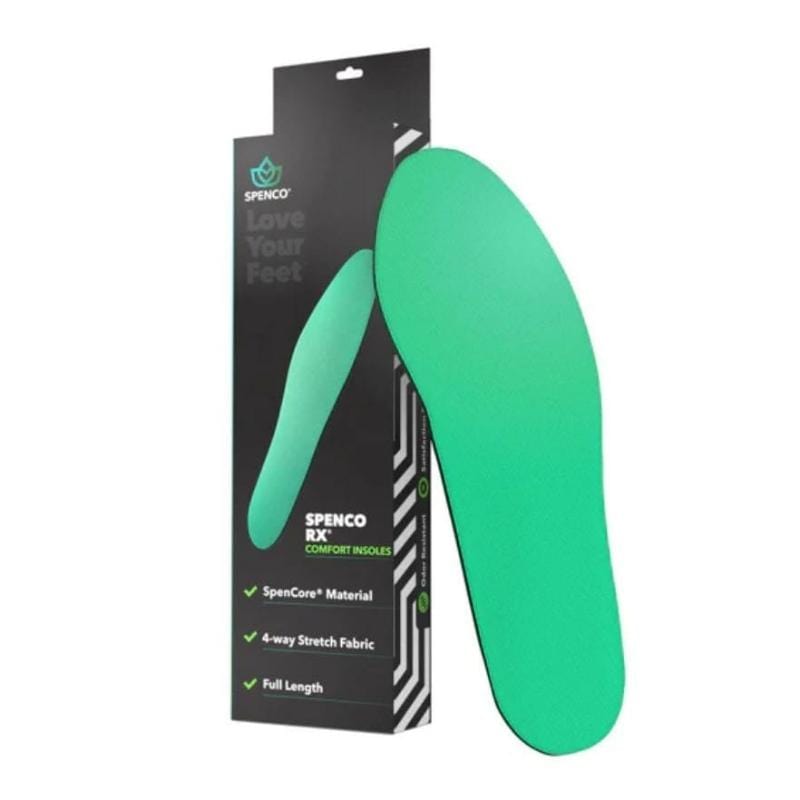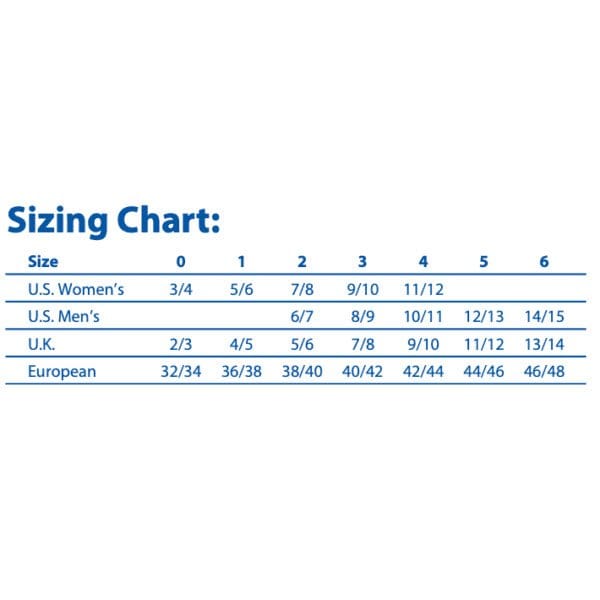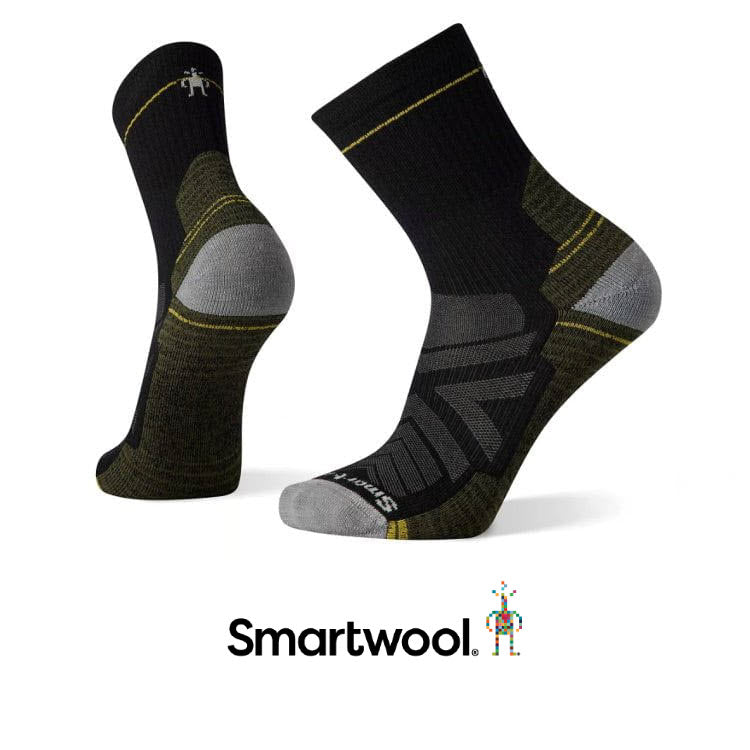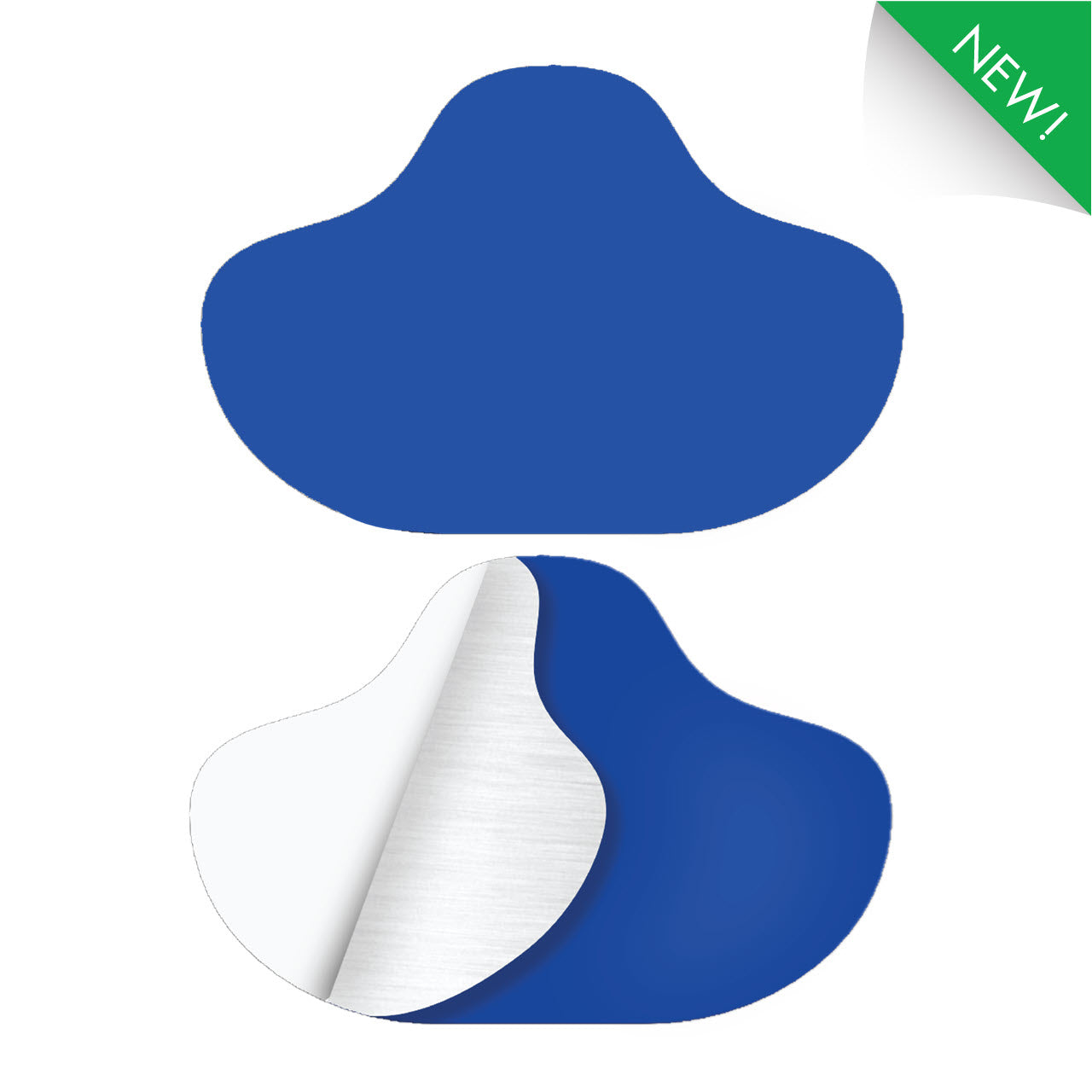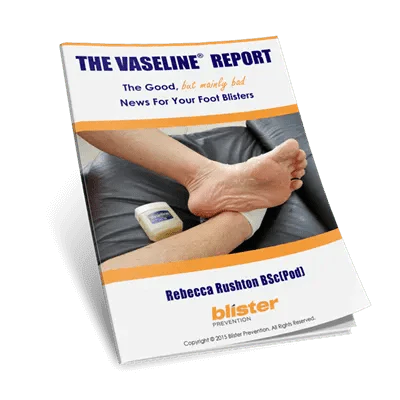Believe it or not, the insole of your shoe is a super helpful indicator of how well your shoes fit your toes. As a podiatrist for 30 years, I still use this Toe Fit Test to show my clients whether their blisters, callouses, corns, black nails and even painful ingrown toenails are caused, or at least exacerbated, by their shoes.
Just last week I had a farmer in with a painful corn under the side of his big toenail. He swore black and blue his new work boots were comfortable, it was just his "ingrown toenail" had flared up. He didn't buy them online, he went in-store to try them on so he could make sure they fit well and felt comfy.
We did the Toe Fit Check test and it was crystal clear to both of us, the boots were WAY too small. And the pressure point on the big toe, right where his "ingrown toenail" was, was definitely the reason for the pain.
What You'll Need For The Toe Fit Check
- The insole from your shoe
- Your foot
Most shoes, but not all, have insoles that are removable. The insole may be held in place with a dot of glue ot tape that can be loosened and pulled out. However, some insoles are not removable; and some shoes don't have insoles. So if that's the case, you're out of luck.
How To Perform The Check
There are two aspects of shoe fit you can assess:
- Overall length
- Toe box width/shape
1. Length Check
- Place: Take your insoles out of your shoes and place them on the floor so the heel of the insole is up against the wall.
- Stand: Now stand on the insole ensuring your heel is also touching the wall. [If you’ve got a large Haglund’s deformity (bony lump on the back of your heel), you may need to move your insole forward ever so slightly.]
- Longest Toe: Look at the positioning of your longest toe in relation to the end of the insole. For some people it's the big toe; for others the 2nd toe.
- Rule of Thumb: You should have the width of your thumb between the end of your longest toe and the end of the insole. Any less than that and your shoe is too short in length to allow for the small natural movement of your foot bones.
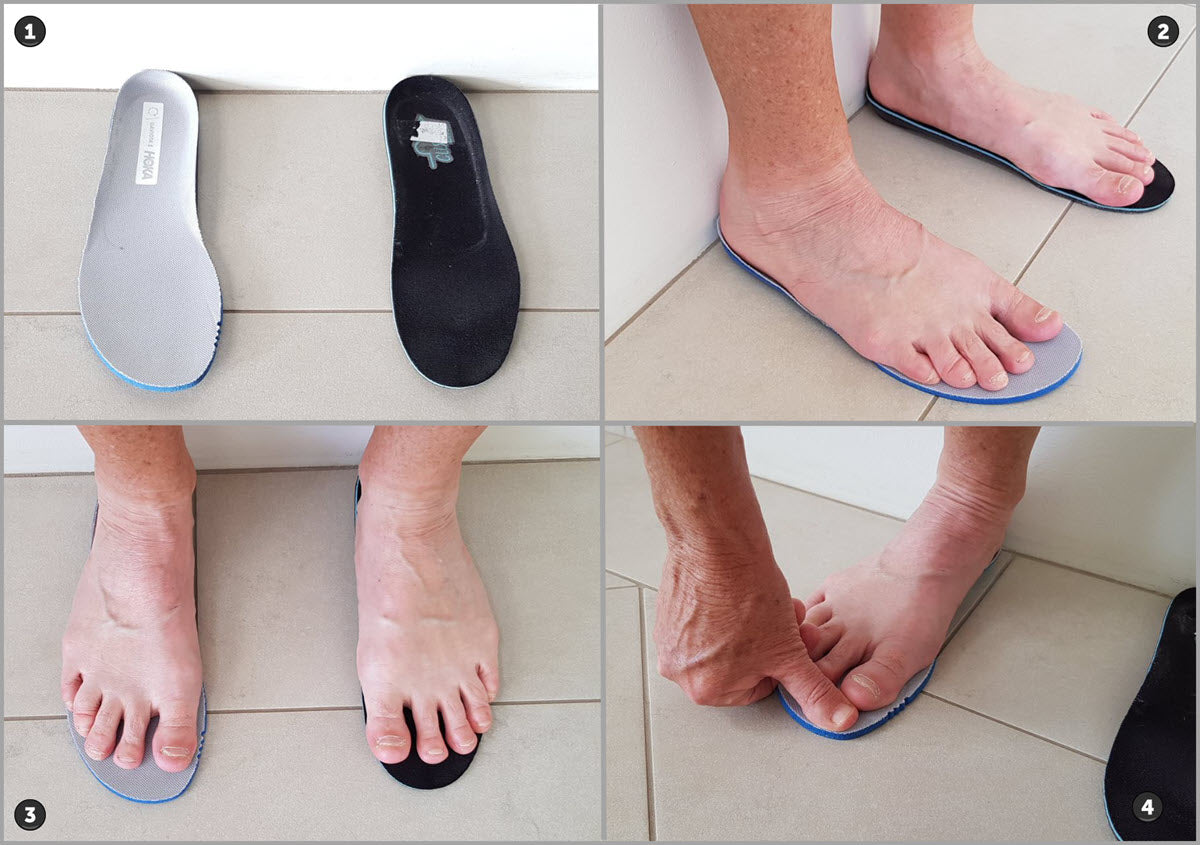
How to perform the Toe Fit Check. We're demonstrating this with different insoles, to help show the differences in toe fit. The grey insole is a Hoka Gaviota; the black insole is a Brooks Ariel.
If too short in length, your toes are jammed into the narrower and shallower end of the toe box, and might be impacting at the end of the shoe.
You might think you don’t need this “thumbs width” of extra space. But consider what happens to your foot when you walk and run. The bones move within your foot - even if there is no relative movement between your shoe, sock and skin surface. The arch generally flattens a little (or a lot for some people), the bones move forward a little (or a lot in some activities) and the soft tissues of your foot stretch to accommodate this internal motion. Your shoes need to accommodate this normal motion, for the sake of your toes.
Which Blisters Could Result From Shoes Being Too Short?
- Toe tip blisters - due to the impact
- Some blisters under the toenails - again, due to the impact
- Outer pinky toe blisters - because the toes are in the narrower end of the shoe
- Some pinch blisters and blisters between the toes - because the toes are squished together a bit more in the narrower end of the shoe
Other problems that can stem from shoes that are too short in length include:
- Callouses, corns, ulcers and abrasions in the same areas as stated above
- Gradual thickening of the toenails, black toenails, ingrown toenails, or discomfort that can feel like an ingrown toenail, where there is overt pressure from the shoe.
2. Toe Box Width/Shape Check
The first two steps are the same as for the length check. Step 3 involves looking for overhang of your toes.- Place: Take your insoles out of your shoes and place them on the floor so the heel of the insole is up against the wall.
- Stand: Now stand on the insole ensuring your heel is also touching the wall.
- Overhang: Can you see any of your toes hanging over your insole?

A demonstration of the Toe Fit Check standing on two different shoe insoles.You'll see there is more room for the toes on the grey insole, with more pressure likely on the 4th and 5th toes when wearing the shoe with the black insole.
Having the little toes bulging a little over the insole is not necessarily a problem. For example, the person in the photo above has no issue with the narrower Brooks shoe in her day-to-day activities as a physical education teacher, even though you can clearly see there is more pressure on toes 4 and 5 in the Brooks (left foot) compared to the Hoka (right foot). Perhaps that would be different if she did a lot more walking or running in these shoes. If that were the case, having performed the Toe Fit Test, the obvious thing to do would be to wear the Hokas for those activities.
Which Blisters Could Result From The Toe Box Being Too Narrow?
- Outer pinky toe blisters - due to the pressure
- Some toe tip blisters - due to the pressure
- Blisters between the toes - due to the toes being squished together
- Some pinch blisters - again, due to the toes being squished together
- Big toe edge blisters - due to the concentration of pressure at the point of overhang
Other problems that can stem from shoes that don’t accommodate your toes include:
- Callouses, corns, ulcers and abrasions in the same areas as stated above
- Gradual thickening of the toenails, black toenails, ingrown toenails, or discomfort that can feel like an ingrown toenail, where there is overt pressure from the shoe.
How To Use The Toe Fit Check
There are a number of ways you can use these checks:
- Assess how well your current shoes fit
- Help you choose your next pair of shoes
- Happy with your current shoes? When it's time to get new shoes, compare the insoles with your old ones and look for something very similar.
- Unhappy with your current shoes? Figure our where the fit isn't quite right, and look for that extra length/width by comparing the toe box shape of the new insole with the old.
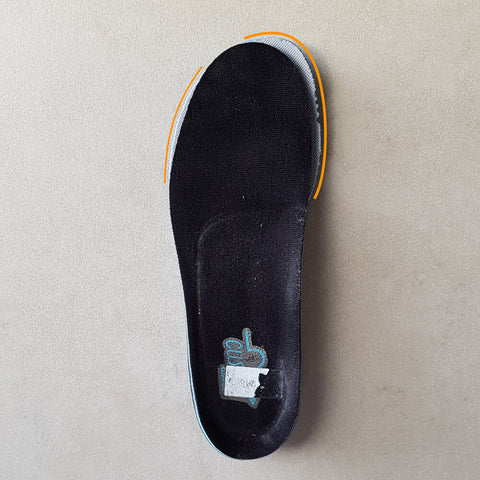
What To Do If Your Insole Isn’t Removable
If your shoes don’t have an insole, or if it’s not removable, there’s a simple way to assess a shoe’s length. Determine which is your longest toe, and while you’re standing in your shoes, press your thumb down at the end of your toe. Your thumb should be able to sink into the shoe and fit between the end of the toe and the end of the shoe. This isn’t going to work with steel toe cap boots or shoes with a very stiff toe box upper – you’ll need to rely on the insole Toe Fit Check for this.
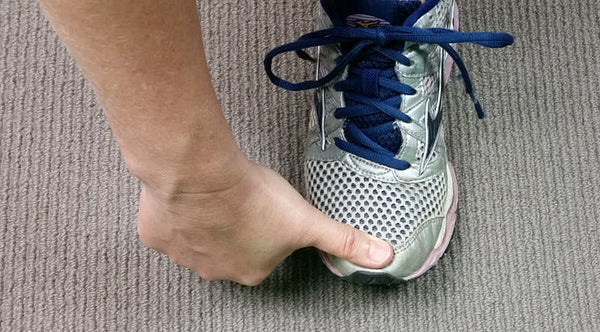
What The Insole Check Doesn't Tell You
While nothing beats going to the shoe store to try the shoes on, not everyone has the opportunity to do this, or even needs to. On the opposite side of the coin, you can go to a shoe store and still make mistakes, just like our farmer friend, even with assistance.
By using the Toe Fit Check, you're taking two very important basic steps to ensuring the size and shape of your shoes match the unique shape of your feet. But it doesn't give you any information about:
- Toe box depth - There's actually no established way to measure this, as I have previously written about. Some shoes are deeper than others, but we have no reliable way to measure it, or communicate it to customers.
- Girth/volume - Some shoes are deeper than others around the forefoot and midfoot. This is helpful if you have bulky forefoot joints, high insteps, or you wear orthotics or custom inserts.
- Overall comfort - There is simply no replacement for have a quick walk around the shoe shop, or run on the treadmill, to get a gauge of the overall comfort of your new shoes for your feet and the rest of your body.
One Thing To Be Aware Of
You can have a shoe that is the perfect size and shape; but if you wear your laces too loose, your foot can slide forward so your toes end up in a narrower and shallower part of the toe box. In this situation, you might as well be wearing a shoe that’s two sizes too small, as far as your toes are concerned. Moral of the story - keep a firm lacing technique to keep your foot where it should be in your shoe.
Conclusion
Use the Toe Fit Check to assess how well your current shoes fit in terms of length and toe box width and shape. Use it to assess the fit of your current shoes. And use it to help choose your next pair of shoes. Remember the "rule of thumb" and to have a minimum of toe overhang by matching the insole shape with the shape of your toes.

